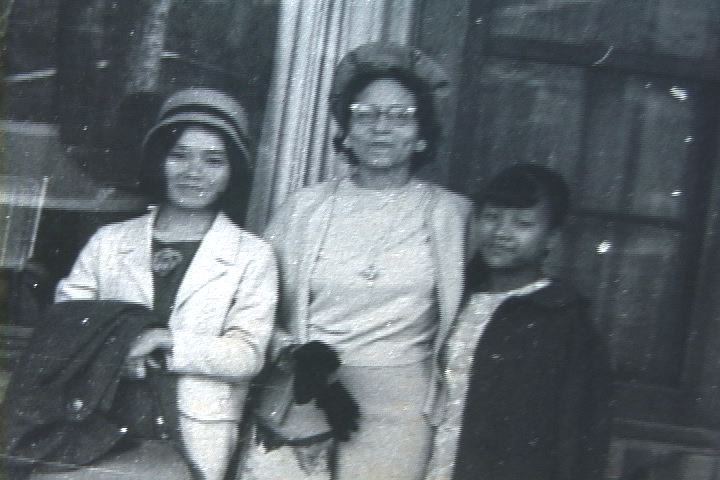A Son of the Wealthiest Planter in the South Convicted of a Great Crime.
The Anderson Intellingencer
Anderson Court House., South Carolina
Thursday Morning, 1875-05-20 (Volume X, Number 44)
page 1, column 3
Source: Chronicling America: Historic American Newspapers. United States Library of Congress.
“William S. Calhoun, convicted of forgery on evidence of his quadroon mistress, Olivia Williams!”
This announcement in the Sunday papers supplies the text for a long and instructive moral discourse, and a very interesting chapter of domestic history.
The Calhoun referred to above is the only son of the late Meredith P. Calhoun, for many years before the war the largest and most lordly planter in the South. The wife of Mr. Calhoun was the daughter of Judge Smith, formerly of South Carolina, where he played a very prominent part in the politics and society of that State. Judge Smith was one of the most ancient and respected families in South Carolina, and inherited large estates, which he augmented in value by his judgment and enterprise. In the political arena he was regarded as the only formidable rival of the great John C. Calhoun. Judge Smith was the acknowledged leader of the Union party in the great secession fight of 1835. Shortly after this he removed to Huntsville, Alabama, where he bought large estates and established himself in an elegant residence, which was the home of a large and generous hospitality. The eldest daughter of Judge Smith married Meredith Calhoun, a young adventurer from the North, of polished manners and good address. Mrs. Calhoun received as her dowry a large sum, which was invested in an immense tract of the rich land on Red River, then held in great demand as the most valuable and productive in the State. This is the land which embraces the greater portion of what is now known as Grant parish. It extends ten miles on the river, and has been leveed at a vast expense, and possesses unlimited resource for the production of cotton and sugar. Upon this estate Mr. Calhoun expended a very great sum, stocking it with eleven hundred slaves, and all the expensive structures and machinery required to produce cotton and sugar. In the palmy days of this culture the yield of this large investment was highly remunerative. For several years before the war the regular income was between $250,000 and $300,000.
Having made several visits to France with his family, Mr. Calhoun acquired a taste for French society and habits, and during the latter period of his life resided in Paris. Here he expended his large income in affording his wife and daughter every opportunity of participating in the elegant and fashionable enjoyments of the gay and luxurious capital. Besides his daughter, an accomplished and elegant young lady, who was born and educated in France, so that she speaks the French language with more facility than her own, Mr. Calhoun had a son who came into this world partially deformed, but not on that account was regarded with less affection and tenderness by his parents. No child was ever more carefully and tenderly watched and cared for than the poor little hunchback, Willie Calhoun. Preferring to live on the plantation rather than expose himself in the brilliant society of Paris, Willie did not accompany his parents abroad. Devoting himself to agricultural life, he finally became a sort of head manager or agent for his father. This was the condition of the family when the war broke out. Mr. Calhoun was residing with his wife and daughter in France, and Willie had charge of the plantation. Of course the war produced most disastrous effects on the Calhoun estate. The destruction of the slave property alone was enough to swamp the whole estate. Mr. Calhoun died about the close of the war, and the widow had given her power of attorney to Willie. In 1868 she returned with her daughter to Louisiana, and proceeded on a steamboat to the landing now known as Colfax, with a view of seeing her son and investigating the condition of her affairs. Her mind had been greatly disturbed by rumors of her son’s “carryings on” from old servants and others. Among other stories which had reached her was one to the effect that he had become a practical as well as a political miscegenationist—that he had been elected by an exclusive negro vote to the Legislature, and had formed a liaison with a buxom quadroon who claimed to be his lawful wife, and who assumed all the airs and authority of the lady of the Calhoun mansion.
It may be imagined with what crushing force these terrible stories fell upon the pride of the high-born mother. Whether it was from the realization of their truth or from some other warning, Mrs. Calhoun, after a brief conversation with some of her old servants at the river landing, came to the conclusion not to expose herself to the humiliation of witnessing the son’s degradation and the profanity of the family mansion, so with her daughter she returned on the boat to the city, and procuring board for herself and daughter at the Bay of St. Louis, sojourned there for some months. Here Mrs. Calhoun died in the summer of 1868, leaving her daughter alone in the world, moneyless and almost friendless. Nothing could be got from the estate. It had been hopelessly involved by Willie.
Miss Ada had been nurtured with boundless indulgence. She had never known what it was to want anything which money could command; and here was she, totally inexperienced, an orphan thrown upon the world, from a position of long-assured wealth and high rank, with no other relative but a brother, who was now her most bitter enemy; but the young lady proved equal to her great emergencies. It would perhaps be an intrusion upon her private affairs to refer to shifts and expedients to which she was driven to regain her fortune, and to save her from the miseries of a poverty which would be tenfold bitter to one reared as she had been.
Suffice it to say that, with the aid of a zealous and persevering young lawyer, she has been placed beyond the reach of the perils so much feared by her, and we sincerely hope her fortunes are in a fair train to restoration, and that her future will realize the old dramatic climax of “virtue rewarded and vice punished.”
And surely this conviction of the bad brother for forgery would seem to fill the last condition of dramatic and poetic justice. After degrading and disgracing himself and family by a disreputable alliance, and incumbering his mother and sister’s estate by consenting to a judgment of breach of promise of marriage of $50,000, in favor of his quadroon mistress, he sought to rid himself and the estate of this incumbrance by an act which the jury had decided to be a forgery.
Truly has the psalmist declared “the ways of the transgressor are hard.” —New Orleans Times.


